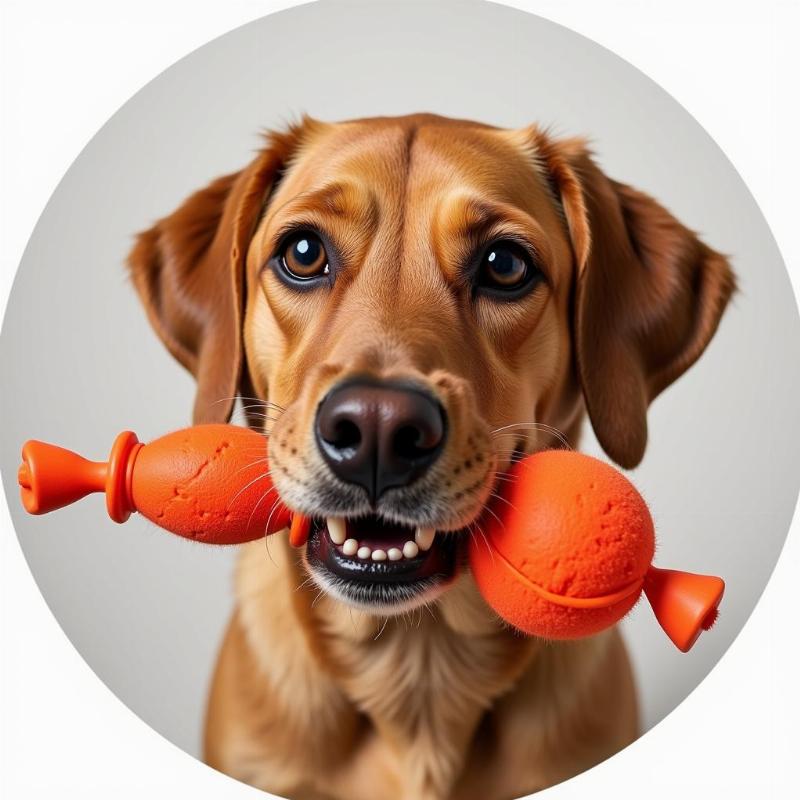Have you ever caught your canine companion giving you the side eye? That sideways glance, with a tilt of the head and perhaps a slightly raised eyebrow, can leave owners wondering, “What are you thinking?” This “dog with the side eye” look is a fascinating aspect of canine communication, and understanding it can deepen your bond with your furry friend.
While dogs can’t verbally express themselves, they are masters of non-verbal cues. The side eye is just one of many subtle signals they use to communicate with us. Let’s delve into the possible meanings behind this intriguing canine expression.
What Does the Dog With the Side Eye Mean?
The “dog with the side eye” can be interpreted in various ways, depending on the context and accompanying body language. It’s rarely a sign of aggression, but rather a complex form of communication.
Uncertainty and Confusion
Often, a side eye indicates confusion or uncertainty. Your dog might be trying to understand your instructions, especially if you’re using unfamiliar words or gestures. Imagine teaching your dog a new trick. A side eye could mean they’re processing the information and trying to figure out what you want.
Apprehension or Fear
In certain situations, the side eye could signal apprehension or fear. If your dog is in a new environment or encountering something unfamiliar, a side eye might be accompanied by flattened ears, a tucked tail, or lip licking. This combination of signals indicates your dog is feeling uneasy.
Assessing a Situation
Dogs are incredibly perceptive animals. A side eye could simply be your dog’s way of assessing a situation. They’re observing your behavior, listening to your tone of voice, and gathering information to determine the appropriate response.
Seeking Your Attention
Sometimes, the side eye can be a subtle plea for attention. If your dog feels ignored or wants to engage in play, they might give you a side eye, hoping you’ll notice and respond. This is particularly common in breeds known for their close bonds with their owners.
Reading the Whole Picture: Body Language Beyond the Side Eye
While the side eye is a significant clue, it’s crucial to consider the entire picture of your dog’s body language. A side eye paired with a wagging tail and relaxed posture likely means something different than a side eye with pinned-back ears and a tense body.
Whale Eyes
“Whale eyes” is a term used to describe when a dog shows the whites of their eyes. This is often a sign of stress or fear and can accompany a side eye in situations where your dog feels threatened or uncomfortable.
Yawning
While yawning can be a sign of tiredness, it can also indicate stress or anxiety in dogs. If your dog gives you a side eye and yawns repeatedly, it could be a sign they are feeling overwhelmed.
 Dog Side Eye – Attention
Dog Side Eye – Attention
Responding to Your Dog’s Side Eye
Understanding the context of the side eye is key to responding appropriately. If your dog seems confused, try rephrasing your instructions or demonstrating the desired behavior. If your dog appears apprehensive, offer reassurance and remove them from the stressful situation. And if your dog simply wants attention, a little playtime or a comforting pat can go a long way.
Conclusion
The “dog with the side eye” is a nuanced form of communication that reflects the complexity of canine emotions and intelligence. By paying attention to the context and accompanying body language, you can decipher the meaning behind this intriguing expression and deepen your understanding of your furry friend. This allows you to respond appropriately to their needs and strengthen the bond you share.
FAQ
- Why does my dog give me the side eye when I talk to him? Your dog might be trying to understand what you’re saying, especially if you’re using unfamiliar words or a tone they haven’t heard before.
- Is the side eye a sign of aggression? Rarely. It’s more likely a sign of confusion, apprehension, or an attempt to assess the situation.
- What should I do if my dog gives me the side eye and seems anxious? Remove your dog from the stressful situation and offer reassurance and comfort.
- Can the side eye be a sign my dog wants attention? Yes, especially if accompanied by other attention-seeking behaviors like bringing you a toy or nudging your hand.
- How can I better understand my dog’s body language? Observe your dog closely in different situations, paying attention to their overall posture, facial expressions, and vocalizations.
is purina puppy chow good for dogs
are beef kidneys good for dogs
collapsible water bowl for dogs
Beautdogs.us is your premier source for expert dog care advice, breed information, and product recommendations. We cater to both new and experienced dog owners, offering comprehensive resources to ensure a happy and healthy life for your canine companion. Learn more about dog nutrition, training, grooming, and overall well-being at Beautdogs.us. For any questions or inquiries, feel free to contact us at [email protected] or call us at +1 501-555-7529.